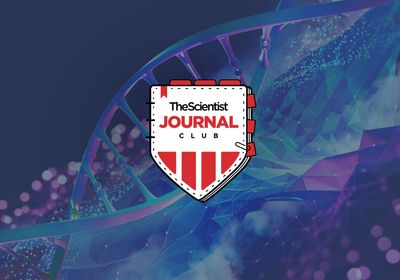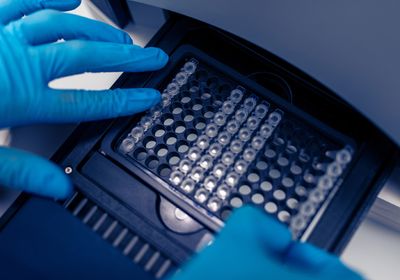
Cancer and aging often go hand in hand, and it’s no coincidence. Both conditions stem from complex, interconnected biological processes, and one protein seems to play a central role: c-Myc, also known as Myc for short.
This protein controls many essential processes for living a long and healthy life, including DNA damage repair and cell growth.1 But for a cancer cell, Myc can be a dangerous asset, enabling it to proliferate out of control. “I think just about everybody would want to come up with some sort of drug that could inhibit Myc,” said Edward Prochownik, a geneticist at the University of Pittsburgh.
A new study published in Cell Reports and led by Prochownik shows what happens when Myc disappears.2 Prochownik’s team developed a mouse model where Myc was genetically reduced by nearly 100 percent throughout the organism’s body. This model could help researchers better understand aging and Myc’s role in cancer.
Researchers had previously tried to eliminate Myc but had been stymied by its critical role in cells. Myc is so important for early development that mice with no Myc typically died as embryos.3 In a previous study conducted at Brown University, researchers sidestepped this by only reducing Myc by 50 percent—enough to measure the effects of its absence, but not enough to kill the mice.4 The resulting mice lived longer and aged more slowly.
But for Prochownik, this did not fully address the question of how eliminating Myc would affect an organism. Shortly after the Brown University researchers published their study, Prochownik and his team developed a new nonlethal strategy to reduce Myc. They developed a genetic strategy that first allowed the mice to have normal levels of Myc to carry out its functions during key developmental stages. After weaning, a portion of the Myc gene was excised in the mice, which almost completely eliminated Myc protein.
To Prochownik’s surprise, the mice survived even with exceedingly low levels of Myc, but they unexpectedly showed signs of aging faster, unlike the mice in the previous study that had partial Myc loss. However, despite developing aging-related conditions such as hair loss, graying hair, and muscle mass depletion, the mice lived longer. Prochownik realized this was because without Myc, the mice were not developing cancer.
“The incidence of premature aging and the incidence of cancer always go hand in hand, and we thought you can't separate them,” Prochownik said. “Our model shows that you can divorce premature aging from the onset of cancer.”
To John Sedivy, a biologist at Brown University who led the previous Myc study but was not involved in the current experiments, the results are compelling. “This was a very creative way to add to [our previous work],” he said. “I think this is one of the best papers on Myc I've seen recently.”
Prochownik hopes to use this mouse model to disentangle the relationship between Myc and aging. His team is currently working on genetically deleting similar proteins to see if they also cause premature aging. Sedivy agreed that this model is a promising tool to understand Myc’s role in aging at different points in an organism’s development, but also emphasized the significance of the near-absence of cancer in the mice.
“The aging side is much more complicated to me, but the cancer seemed extremely clear,” Sedivy said. “Myc is really essential to drive tumor growth.”
References:
- Das SK, et al. MYC: a complex problem. Trends Cell Biol. 2023;33(3):235-246.
- Wang H, et al. Premature aging and reduced cancer incidence associated with near-complete body-wide Myc inactivation. Cell Rep. 2023;42(8):112830.
- Davis AC, et al. A null c-myc mutation causes lethality before 10.5 days of gestation in homozygotes and reduced fertility in heterozygous female mice. Genes Dev. 1993;7(4):671-82.
- Hofmann JW, et al. Reduced expression of MYC increases longevity and enhances healthspan. Cell. 2015;160(3):477-88.





